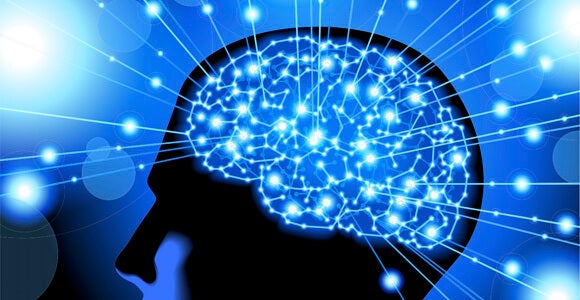
It turns out that an apple a day — or at least an apple spinach salad — does keep the doctor away. But it’s not true that when brain cells die we can’t make more. When and how remain active questions, however, so there’s no free pass to collectively disregard our mothers’ safety tips just yet.
Researchers at Duke University have shed some light on the subject with findings that suggest that down the line doctors may be able spur the brain to repair itself.
The subventricular zone, a structure within the fluid-filled lateral ventricles, was one area scientists knew could generate new neurons from neural stem cells. They had also conjectured that the brain can somehow place orders for more cells.
The Duke researchers, led by Chay Kuo, found neurons in the subventricular zone of mice that had not previously been identified. These neurons are one mechanism for creating new cells, the researchers lay out in a recent paper in Nature Neuroscience. Amplifying and dampening the neurons’ activities using laser-based optogenetic tools first discovered in 2010, Kuo and his colleagues saw corresponding changes in how many neural stem cells were on hand in the brain.
 The new neurons express an enzyme called ChAT (or choline acetyltransferase), which is required to make the neurotransmitter acetylcholine. They’re calling them ChAT+ neurons.
The new neurons express an enzyme called ChAT (or choline acetyltransferase), which is required to make the neurotransmitter acetylcholine. They’re calling them ChAT+ neurons.
“Kuo’s team was able to control CHaT’s action pretty much like a dimmer switch, and the stem cell production of neurons rose and fell in concert with what they were doing. This is the first piece of a new circuit that’s never been seen,” Karl Lief Bates, Duke’s director of research communications, said in an email.
The findings boost hopes that the brain may be able to repair itself from within.
Kuo hopes to eventually find the way to “engage certain circuits of the brain to lead to a hardware upgrade. Wouldn’t it be nice if you could upgrade the brain hardware to keep up with the new software?”
It’s hard to argue with the promise of a new computer, but a lot of the details still need to be worked out. Beyond lending credence to the theory that acetylcholine is involved in neurogenesis, the researchers don’t yet know how the ChAT+ neurons would normally place their order for new nerve cells.
“We have not found the command codes used normally in the brain. Using laser lights we programmed up some artificial commands to these neurons and they worked,” Kuo explained in an email interview.
In the mouse study, the new neurons went to the olfactory bulb. But because smell is a much more important brain function for rodents than for humans, it may well be that in humans the new brain cells get delivered somewhere else. Wherever that final destination is would point to the functions maintained or repaired through the process.
There’s one promising coincidence. The subventricular zone is deep inside the brain by the striatum, and just last month Swedish scientists identified newly made neurons in the striatum. The striatum plays a role in movement and self-control.
One thing is for sure: The brain doesn’t do as much self-maintenance as one might like. It’s sophisticated hardware that can sometimes be fixed, sometimes not. It’s certainly not software that updates on its own in the background.
We asked Kuo if his findings point to any medical approaches that would force the brain to repair itself after injuries such as stroke or traumatic injury. Would drugs that affect acetylcholine work for brain damage like SSRIs do for depression?
Kuo said the seeming parallels probably don’t hold true. Rather, he thought that stem cell therapy — to add new hardware to replace what was damaged — combined with behavior therapy — to load it the new hardware with data — holds more promise.
If stem cells can help repair intellectual hardware once deemed kaput, other studies suggest they may be able to perform other health major upgrades as well. Stem cell therapy could help keep cancer at bay, maintain muscle mass as we age and put the anti-aging skin care industry out of business.
The future looks bright — but wear sunscreen and don’t kill too many brain cells, just in case.
Images: VLADGRIN / Shutterstock.com, Johan Swanepoel / Shutterstock.com


